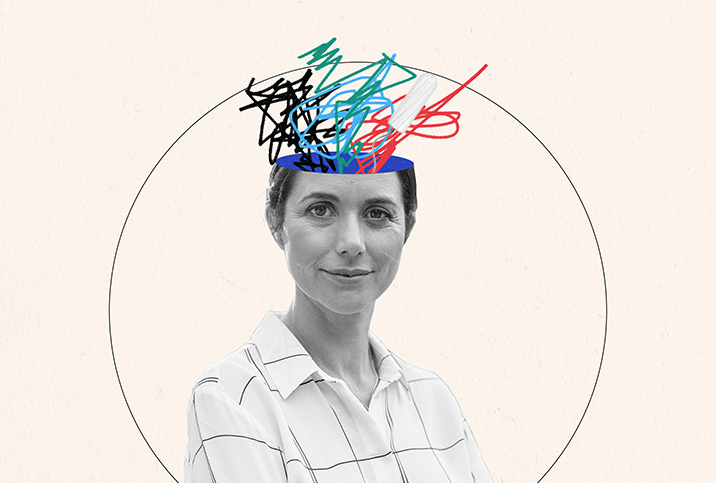The Stages of the Menstrual Cycle Throughout Your Life

As you grow older, a lot of changes occur to your body. Your metabolism slows down, your hair starts graying and your bones shrink in size and density. Periods change and evolve, too, as a result of changing hormone levels, pregnancy and perimenopause.
While every woman's monthly cycle is different and can fluctuate throughout her lifetime, some common changes can occur throughout the stages of the menstrual cycle.
Your teenage years
During your teenage years, it's normal for your periods to be irregular and unpredictable as your hormones have yet to stabilize. It's likely you'll experience mood swings. You might even go months without having your period.
The age at the onset of menstruation (menarche) is dependent on various factors, such as genes, race, physical activity, body mass index (BMI), environmental conditions and even where you live.
In the United States, the average age at the time of menarche is 12 years, according to National Health Statistics Reports published in 2020. Starting your period a few years earlier or later than this age is also completely normal.
Your 20s
Your menstrual cycle becomes more regular and predictable as your hormones stabilize. If your period has yet to regulate, it's probably good to check in with your doctor.
"Periods which never regulate to a monthly cycle may warrant a visit to the doctor," confirmed London-based Ravina Bhanot, M.B.B.S., founder of Zonas Fertility. "Your doctor may want to check your blood hormone levels and also organize a transvaginal scan."
Your 20s are also the time when your fertility is at its peak. However, with more people delaying having children in pursuit of their careers or education, most women this age also go on birth control.
During 2017 to 2019, 60.9 percent of women ages 20 through 29 in the U.S. were on some form of contraception, based on statistics from the Centers for Disease Control and Prevention (CDC). Common types of birth control include the hormonal pill, intrauterine device (IUD), vaginal ring and the patch.
While there isn't a standard cycle, the length of a typical cycle may range from 21 to 35 days.
These contraceptives can bring changes to your periods that differ from one person to another depending on the type of birth control being used. For example, the hormonal pill may regulate or lighten menstruation, lessen menstrual cramps and make periods shorter.
"Broadly speaking, hormonal IUDs also lighten flow and lessen cramps for some, but might result in irregular or even absent menses," said Alyssa Dweck, M.D., an OB-GYN in New York and spokesperson for feminine care brand Intimina. "The copper IUD typically keeps the flow as regular as it would be, but might result in heavier or crampier periods."
While there isn't a standard cycle, Dweck explained that the length of a typical cycle—defined as the first day of your menses until the first day of the next menses—may range from 21 to 35 days.
"The usual flow length is up to seven days with the flow manageable, in other words, not interfering with day-to-day activities," Dweck said.
Bleeding for more than eight days, a cycle length of fewer than 21 days or greater than 35, and a heavy enough flow to cause anemia or interference with your life should be causes for concern, according to Dweck.
"Cramps that are persistent or worsen over time, interfere with day-to-day activities and quality of life, and do not respond to typical measures like over-the-counter medication or heating pads may also warrant a visit to a healthcare provider," she advised.
Your 30s
During this stage, your periods are probably still as regular as they were in your 20s. However, perimenopause changes might be recognized in the mid- to late 30s. Defined as the time during which your body makes a natural transition to menopause, perimenopause has an average length of about four years, but some people may be in perimenopause for only a few months, while others may be in this phase for more than four years.
During perimenopause, the hormones responsible for ovulation and menstruation fluctuate, leading to irregular or skipped periods and periods that are heavier or lighter than usual. While experiencing these perimenopausal symptoms in your 30s is completely normal, for most women, these changes are more prominent in their 40s.
Many women during this stage also give birth. In 2020, the fertility rate among women ages 30 through 34 in the U.S. was the highest of any age group. During pregnancy, your periods stop.
"After giving birth, the bleeding that you have is called lochia and it is not a period," explained Suzanne Bovone, M.D., an OB-GYN at Obstetrics and Gynecology of San Jose, part of the Pediatrix Medical Group in California.
"It is a shedding of the lining from pregnancy and may take up to six to eight weeks to stop," Bovone continued. "When you do have your first period after pregnancy, it may be heavier and take a few cycles to regulate, while some may also notice cramps worsen."
Bovone added that many women do not have a period while breastfeeding.
"Some women, however, do get their period while nursing, and this is completely normal," she said. "A period can come back as early as four to six weeks, and others may get their period at six to 10 months. Each person is different."
One point to keep in mind is that ovulation can still occur while you are nursing. Therefore, contraception is still needed to prevent pregnancy.
"Speak with your OB-GYN about contraceptive options that are safe with nursing," Bovone advised.
Uterine fibroids are more common during your 30s and 40s through menopause. The size and location of fibroids may influence your flow, and many people with larger fibroids or those found in the uterine cavity experience heavier and more painful menses, Dweck said.
If you experience excessive or painful bleeding and/or other symptoms related to large uterine fibroids, such as a feeling of fullness in your lower abdomen, frequent urination, pain during sex or lower back pain, you may need to alert your healthcare provider to consider fibroids as part of the diagnosis.
Your 40s and beyond
During your 40s, your ovaries slow down estrogen production and menopausal symptoms, including hot flashes, vaginal dryness, night sweats, irregular periods and urinary urgency, are more noticeable. You can still get pregnant during perimenopause, so it's essential to continue your birth control measures.
"Skipped menses for one or more months, irregular menses and change in flow are not uncommon in your 40s," Dweck said. "Some have lighter or absent menses, and others will experience a heavier flow, especially after having missed several months in a row."
Some women may also notice clots and shorter cycles, according to Bovone.
You've reached menopause when you have gone 12 consecutive months without your period for no other reason. Menopause starts at an average age of 51 in the United States.
"Blood hormone tests are often used to support this diagnosis, but are not diagnostic of menopause," Dweck said. "Menstrual bleeding that occurs after menopause should be investigated."
While every woman's experience differs depending on various factors, the stages of the menstrual cycle remain similar.




















